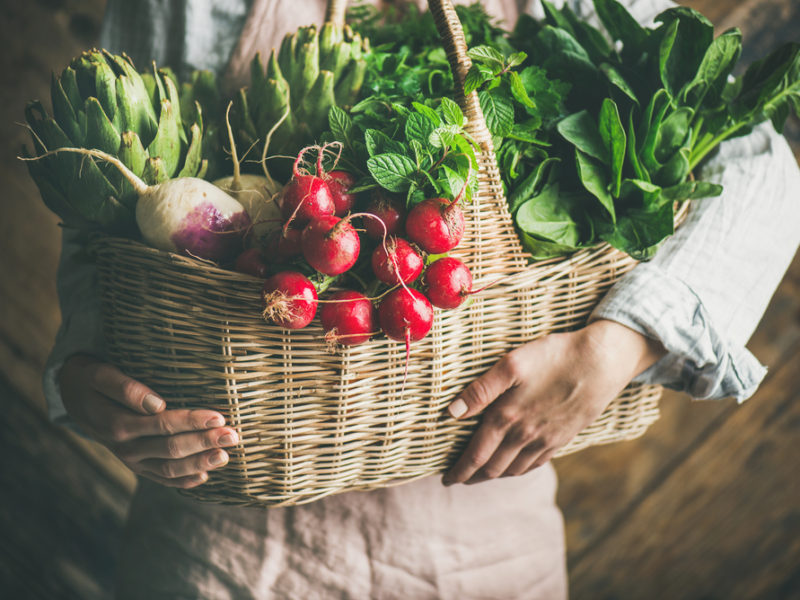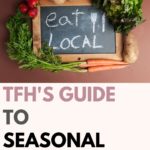Buying seasonal foods can be a great way to support local growers and get nutrient-dense produce. Find out all the reasons to eat foods in season with this guide.
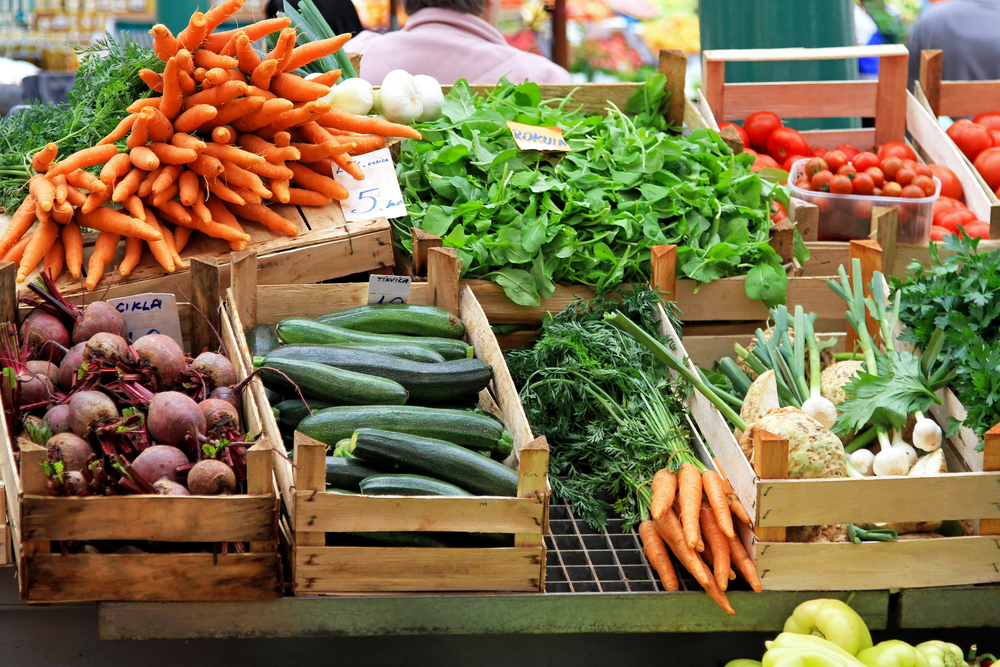
It might not seem like there are any immediate benefits to eating in season, but you’d be surprised. You support local farmers, save money, and enjoy foods at their peak flavor by buying seasonal foods. And since seasonal fruits and vegetables have grown better because they’ve adapted naturally, they also tend to have more nutrients than out-of-season produce. So eat well and eat in season! Here are some tips for doing just that.
This is our seasonal food guide for eating more sustainably.

How to Eat in Season Throughout the Year
Seasonal foods are the best! They’re grown locally and in season, so they’re fresher, healthier, and more delicious than their non-seasonal counterparts. It also means you can buy them at the peak of freshness for the lowest price, which adds up over time! Here’s everything you need to know about seasonal foods and how to buy them!
What are Seasonal Foods?
How often have you reached for berries at the grocery store only to realize they come from halfway around the world? Seasonal fruits and vegetables are going to be grown close by. Buying food in season supports your local economy and benefits the environment by decreasing fuel consumption and food waste.
Seasonal food is produce purchased and consumed around the time it is harvested. For example, purchasing fresh fiddlehead ferns in season in New York means buying them in the spring shortly after farmers have harvested them.
This guide will teach you everything you need to know about buying seasonal foods, including using them in your kitchen, buying them on your next trip to the farmers’ market, and implementing a sustainable diet plan that uses seasonal foods year-round!
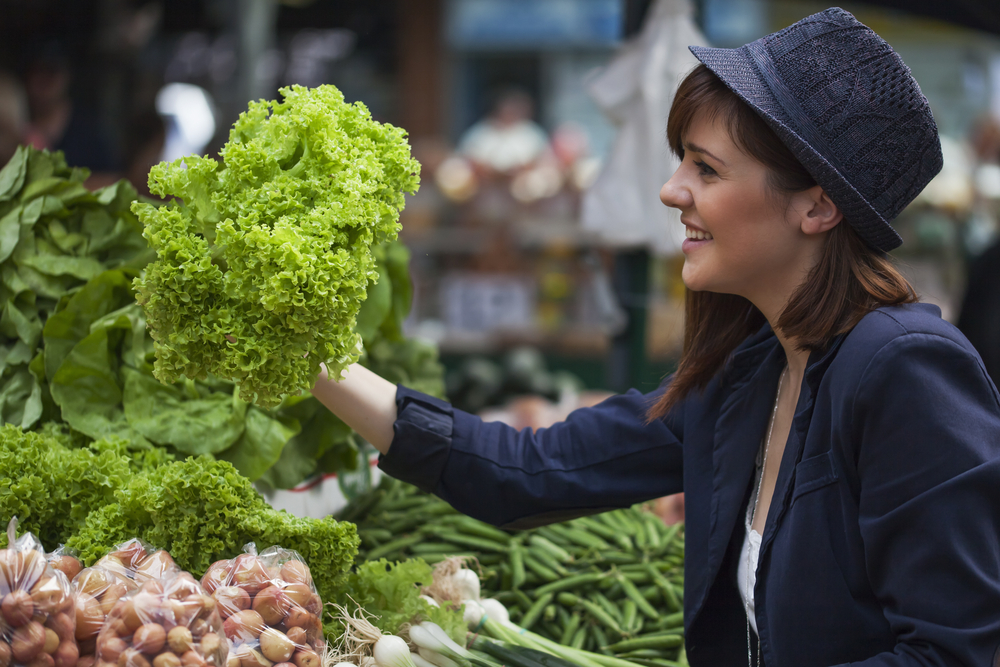
Is it Better to Eat Foods That Are in Season?
Eating for the season is an excellent way to minimize our environmental impact from a societal perspective. For example, if everyone ate seasonal produce, there would be less food waste—and that’s important because every year, about 1.3 billion tons of food end up in landfills across America (1).
In addition, when you buy seasonal fruit and vegetables, you support local farmers and businesses using environmentally sustainable farming methods. You can get to know the farmers and how they do things.
Spending money in the local economy is a win for you, the families that produce your foods, and your community.
The Benefits of Eating Seasonal Foods
In season, food tastes better and fresher. Although we enjoy eating strawberries year-round, they are much sweeter and more nutritious at the end of the season when they’re easy to purchase directly from local growers.
Produce in season is fresh, smells better, sweeter, and fully ripe. The fruits and vegetables ripened on vines and trees are taken at the correct time and harvested in the proper season, offering much greater flavor and nutrition.
Why is it better to eat seasonal food?
Seasonal fruits taste fresher, sweeter, and perfectly ripe. With optimal growing conditions and more sun exposure come higher levels of antioxidants, such as Vitamin C, folate, and beta-carotene! It is BETTER to eat in season!
Eating in season is not just a food trend.
In the ancient Indian Ayurveda practices, ritucharya is a word that means to have seasonal meals. Ritucharya defines the best foods for the seasons to keep the body healthy and prevent diseases from developing.
While seasons or cuisine are specific to India, the philosophy remains true wherever we live. Aside from the health benefits of consuming in season, season food usually tastes better.
We easily food long distances; with this luxury, it is difficult to swear off out-of-season berries and avocado toast! Most people don’t know when seasonal fruit or veggies are available.
In the early 1900s, most people knew the most suitable time when picking blueberries or what vegetables were most likely to flourish there. The new modern convenience lifestyle makes understanding these basic ideas challenging. But, it is important to understand where your food comes from and what is in season, even if you don’t grow a garden.

It’s better for the environment.
Food produced during the appropriate season also benefits the environment.
Most produce is picked too soon and stored for long periods before reaching the customer. Consider how the long journey from farm to grocery store affects the nutritional values of food, the price, and the environment.
Eating seasonal foods is cheaper.
When grown in season, it is often plentiful and cheaper than others. If you want to save money on groceries, choose healthy produce grown close to home. Eating in season saves money on food costs!
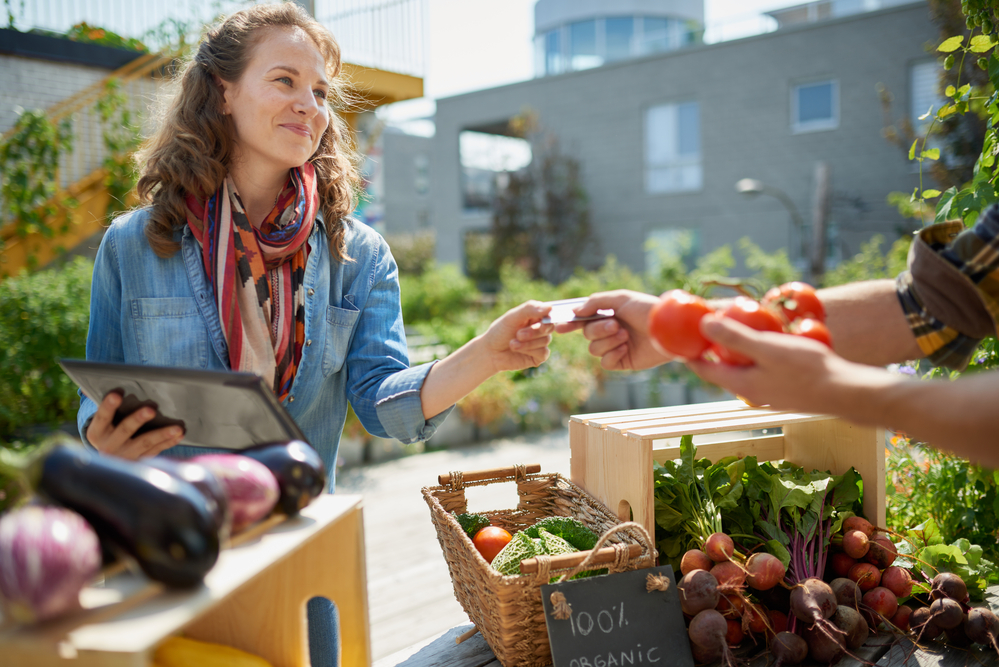
How Do You Eat According to the Seasons?
Seasonal produce is at its best. One way to ensure you buy the best in-season options is to shop at local and independent stores, farmers markets, and produce stands. Make it a habit to shop locally first and foremost.
Shopping for local produce and seasonal fruits and vegetables has so many benefits than what meets the eye. Local farmer’s markets serve the community with in-season produce.
You can find fresh produce like fruits and vegetables and other foods like local dairy products and pastured meats by shopping at the farmer’s market.
What Foods are in Season Right Now?
Here is our free printable list of seasonal foods you can bring on your next shopping trip.
A Seasonal Guide to Shopping for Sustainable Foods
Another great way to familiarize yourself with which staples are in season in your area is through the Seasonal Food Guide app.
Winter Seasonal Foods
- Fruits: Citrus, Apples
- Greens: Kale, Spinach, Lettuce, Mustards, Lambs Quarters, Collards, Microgreens, Sorrel
- Roots: Radish, Rutabaga, Beets, Turnips, Celeriac, Kohlrabi, Fennel, Horseradish, Carrots
- Winter Squash: Pumpkins, Acorn Squash, and Other Varieties
- Leeks
- Herbs: Cilantro, Mints, Oregano, Parsley, Purslane, Sage
- Radicchio
- Tree Nuts and Peanuts
- Tubers: Jerusalem Artichokes, Sweet Potatoes
Spring Seasonal Foods
- Fruits: Loquats, Strawberries, Apricots, Pineapple, Avocado
- Greens: Arugula, Chard, Collards, Kale, Lamb Quarters, Lettuces, Mustard, Sorrel, Spinach, Watercress
- Roots: Turnips, Carrots, Radish, Fennel, Beets
- Herbs: Basil, Chives, Cilantro, Mint, Oregano, Parsley, Purslane, Rosemary, Sage, Tarragon, Thyme
- Rhubarb
- Fiddlehead Ferns
- Sweet Potatoes
- Peanuts
- Peas
- Mushrooms
- Green Onions, Leeks, Ramps
- Bok Choy, Broccoli, Cabbage, Brussel Sprouts
Summer Seasonal Foods
- Fruit: Raspberries, Aronia Berries, Honeyberries, Elderberries, Blackberries, Brambles, Cherries, Figs, Gooseberries, Ground Cherries, Watermelon, Cantaloupe, Plums, Peaches, Nectarines, Blueberries, Muscadines, Grapes
- Herbs: Basil, Dill, Chives, Cilantro, Parsley, Lavender, Mint, Oregano, Parsley, Rosemary, Sage, Thyme
- Greens: Microgreens, Collards, Chard
- Tomatoes
- Cucumbers
- Peppers
- Summer Squash
- Tomatillos
- Peanuts
- Okra
- Tubers: Sweet Potatoes, Potatoes, Jerusalem Artichokes
- Beans: Snap Beans, Snow Peas, Lima Beans, Green Beans, Black-eyed Peas
- Cabbage
- Garlic, Shallots, Green Onions, Leeks
Fall Seasonal Foods
- Fruit: Apples, Figs, Grapes, Pears, Pomegranate, Quince, Muscadines, Grapes, Ground Cherries, Persimmons, Raspberries
- Greens: Chard, Chicory, Collards, Kale, Lettuces, Arugula, Lamb’s Quarters, Sorrel, Spinach, Microgreens
- Herbs: Parsley, Oregano, Mints, Cilantro, Lavender, Basil, Purslane, Rosemary, Sage, Thyme
- Tubers: Potatoes, Sweet Potatoes
- Mushrooms
- Corn
- Garlic, Onions, Leeks, Shallots
- Winter Squash: Pumpkins, Butternut, etc.
- Broccoli, Cauliflower, Cabbage, Brussel Sprouts, Rapini, Bok Choy, Radicchio
- Cardoons and Artichokes
- Celery
- Roots: Celeriac, Fennel, Kohlrabi, Horseradish Parsnips, Turnips, Beets, Ginger, Radish, Salsify

How Can I Learn More About Sustainable Nutrition?
If you’re looking for more information on sustainable eating, some great organizations can help.
You might want to check out a few:
1) Community-Supported Agriculture (CSA): CSA programs allow consumers access to organic produce directly from farmers by paying a set fee upfront. Search Local Harvest for one in your area.
2) Farmers Markets: These markets help local farmers sell their goods, often through vouchers or credits for food bought from farmers at the market. Seek yours out today!
3) Organizations like Slow Food and Chefs Collaborative promote seasonal eating and support local food initiatives.
4) Educate yourself! Keep reading articles like this, and join the TFH community to stay in the loop!
References and Further Reading for Eating Seasonal Foods
- Wood, B. (2019, June 29). Five ways social entrepreneurs are trying to cut food waste. PBS NewsHour. Retrieved May 24, 2022, from https://www.pbs.org/newshour/world/agents-for-change/5-ways-social-entrepreneurs-are-trying-to-cut-food-waste
- Seasonal Food Guide. (n.d.). Seasonal Food Guide. Retrieved May 24, 2022, from https://seasonalfoodguide.org/
